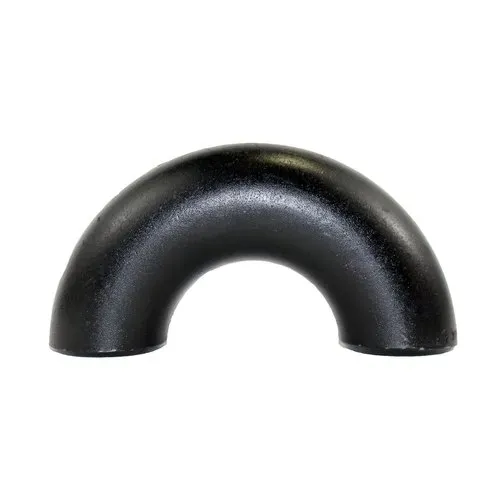-
Cangzhou Yulong Steel Co., Ltd.
-
Phone:
+86 13303177267 -
Email:
admin@ylsteelfittings.com

Nov . 13, 2024 11:14 Back to list
coupling thread types
Understanding Coupling Thread Types in Mechanical Engineering
Couplings play a vital role in mechanical systems, enabling the connection of shafts to transmit power, transmit torque, or allow for movement between two rotating parts. Among the various components of couplings, thread types are crucial for ensuring strong and reliable connections. Understanding the different types of coupling threads can greatly enhance the performance of mechanical assemblies, reduce wear and tear, and improve the overall efficiency of the system.
Types of Coupling Threads
1. Unified Thread Standard (UTS) This is a thread type commonly used in North America. UTS threads are characterized by a symmetrical design with a 60-degree angle, designed to provide a strong engagement between threaded parts. This thread type features standardized dimensions that make them interchangeable across various manufacturers, simplifying design and maintenance.
2. Metric Thread Predominantly used in Europe and other parts of the world, metric threads follow a similar design principle to UTS but are measured in millimeters. This system is beneficial for international applications, ensuring compatibility across different countries and manufacturers. The standardization of metric threads allows for easy replacement and maintenance, enhancing the efficiency of couplings.
3. Acme Thread Recognized for its trapezoidal shape, the Acme thread is ideal for power transmission applications. This thread type, designed to withstand high loads and resist wear, is often used in screw jacks, lathes, and other machinery requiring significant torque transfer. The flat profile of the Acme thread reduces friction, thereby enhancing efficiency in mechanical systems.
4. Square Thread Similar to the Acme thread, square threads are also used for power transmission but are typically stronger and more efficient in high-load applications. They feature a square-profile design that minimizes friction, resulting in higher efficiency compared to other thread types. Square threads are commonly used in heavy-duty applications, such as in hydraulic cylinders and certain types of jacks.
5. Buttress Thread This thread type is specifically designed for applications that require high axial loads in one direction, such as in vices or clamping mechanisms. The buttress thread has a distinct asymmetrical shape, wherein one flank is at a steep angle while the other is at a shallow angle. This design allows for load handling in one direction while retaining stability in the connection.
coupling thread types

Factors to Consider When Choosing Thread Types
When selecting the appropriate coupling thread type for a specific application, several factors should be considered
- Load Capacity Evaluate the load requirements of the application. For high-load applications, consider stronger options like Acme or square threads. - Ease of Assembly Some thread types are easier to assemble and disassemble than others. Unified and metric threads offer interchangeable designs for quick maintenance.
- Friction and Wear Consider the amount of friction generated by the thread type
. Acme and square threads generally produce less friction, leading to less wear and longer lifespan of the component.- Environmental Conditions The operating environment can influence thread choice. Consider factors such as humidity, temperature variations, and potential exposure to corrosive substances.
- Cost and Availability Cost can also be a determining factor. Standardized threads like UTS and metric threads tend to be more readily available and cost-effective compared to specialized threads.
Conclusion
Understanding coupling thread types is essential for engineers and technicians involved in the design, assembly, and maintenance of mechanical systems. The choice of thread type can significantly affect the performance, efficiency, and longevity of mechanical couplings. By carefully considering the application requirements, as well as the properties and characteristics of each thread type, one can ensure optimal performance and reliability in their mechanical systems. Whether in automotive, aerospace, or industrial machinery applications, the right coupling thread can make all the difference in achieving a successful assembly.
Latest news
-
ANSI 150P SS304 SO FLANGE
NewsFeb.14,2025
-
ASTM A333GR6 STEEL PIPE
NewsJan.20,2025
-
ANSI B16.5 WELDING NECK FLANGE
NewsJan.15,2026
-
ANSI B16.5 SLIP-ON FLANGE
NewsApr.19,2024
-
DIN86044 PLATE FLANGE
NewsApr.19,2024
-
DIN2527 BLIND FLANGE
NewsApr.12,2024
-
JIS B2311 Butt-Welding Fittings LR/SR 45°/90° /180°Seamless/Weld
NewsApr.23,2024
-
DIN2605-2617 Butt-Welding Fittings LR/SR 45°/90°/180° Seamless/Weld
NewsApr.23,2024











